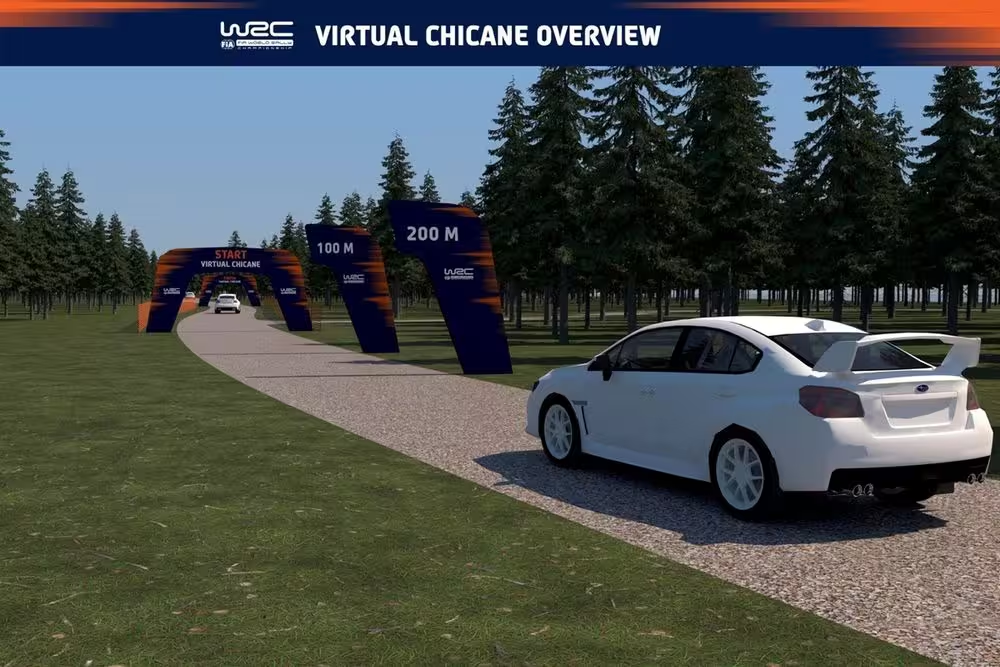The World Rally Championship will introduce virtual chicanes for the first time in competition at Rally Finland, in a move that has helped re-introduce the legendary Ouninpohja stage.
The advancement in technology has seen virtual chicanes become more prevalent in rallying with the system already being used in various championships including the European Rally Championship at Rally di Roma.
This weekend will see the concept graduate to the WRC following a test of the system during shakedown at Rally Latvia earlier this month.
A virtual chicane provides a way to slow cars down ahead of a challenging section without organisers placing a physical obstacle for drivers to navigate around. Instead of using heavy hay bales to mark out a chicane, organisers can now designate predetermined areas where drivers are required to slow town o 60kph.
Virtual chicanes will be deployed again in shakedown in Finland and will feature in the Ouninpohja stage, which will be run twice as stage 13 and stage 16 on Saturday. Ouninpohja returns for the first time since 2016 and is being run in the legendary 33-kilometre ‘long’ format but in the opposite direction this year.
The stage is among the most famous in WRC history, known for its high-speed jumps and its challenging sweeping corners and its return can be credited to the introduction of virtual chicanes.
“It was great for the organisers to ask about it [Ouninpohja’s return],” Nicolas Klinger FIA rally safety delegate told Motorsport.com.
“They wanted Ouninpohja and to run it again, but for sure we know it is very fast. It is not about the fast straights it [the virtual chicanes] are to avoid entering a dodgy corner that is fast to lower the risk a bit.”
Virtual chicane
Photo by: WRC.com
Why are virtual chicanes being introduced?
As Klinger explained above one of the reasons why virtual chicanes have been introduced is due to safety. The concept reduces the speed of cars prior to a challenging section of road and does so in a way that further reduces the risk without using physical objects that could cause collisions and cause damage to vehicles.
However, the advancement in technology to enable event organisers to adopt such a system coupled with struggles to source hay bales to designate chicanes has also played a part in the rise of virtual chicanes in rallies across the world.
“In some countries, they can’t have straw bales and it has become more and more difficult to…
Click Here to Read the Full Original Article at Motorsport.com – RALLY – Stories…

